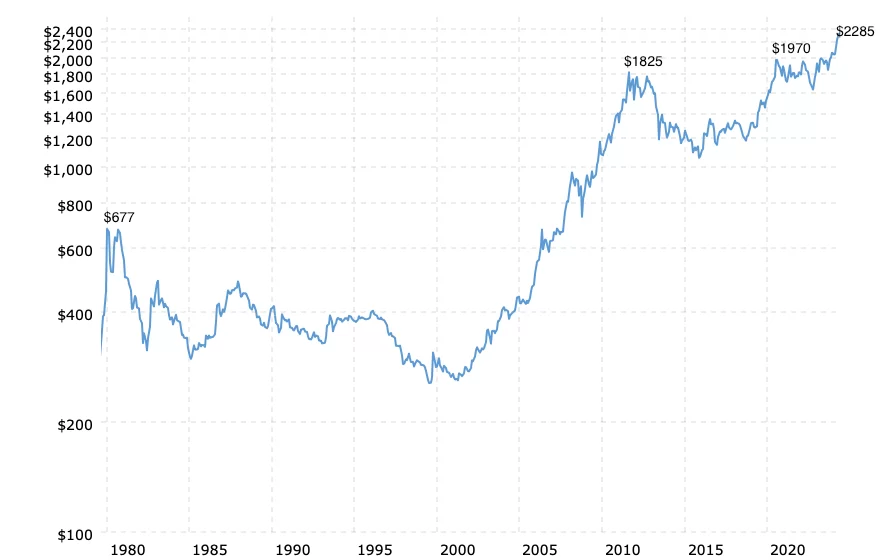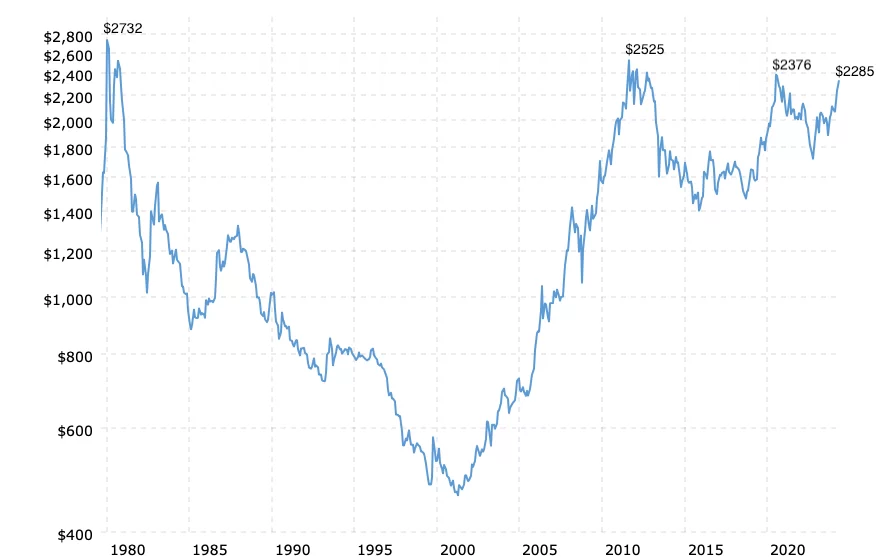Gold Has Done Its Job – Isn’t That Enough?
Commodities / Gold & Silver 2024 May 31, 2024 - 06:27 PM GMTBy: Kelsey_Williams
GOLD HAS DONE ITS JOB
For most of us who understand what gold is (and, what it isn’t), gold continues to perform as reasonably expected. Rather, its price continues to reflect the ongoing loss of purchasing power in the U.S. dollar. Gold, itself, isn’t doing anything at all. (see Not About Gold; All About The Dollar)
Short term nominal profits notwithstanding, gold’s value is the same as it is always. Gold is real money and its value is in its use as money. Gold is a medium of exchange, a measure of value, and a long-term store of value.
There has been no decoupling or modification of any link between the gold price in dollars and the value of the U.S. dollar. Part of the confusion about the link between the U.S. dollar and the gold price results from the tendency of analysts and others to cite current strength in the U.S. dollar index.
U.S. DOLLAR INDEX
“The U.S. Dollar Index (USDX, DXY, DX) is an index (or measure) of the value of the United States dollar relative to a basket of foreign currencies, often referred to as a basket of U.S. trade partners’ currencies. The Index goes up when the U.S. dollar gains “strength” (value) when compared to other currencies.” (Wikipedia)
The “basket of foreign currencies” includes the Euro, Japanese yen, Pound sterling, Canadian dollar, Swedish krona, Swiss franc. Nowhere is there any reference to gold. The only thing the U.S. Dollar Index tells us is how the U.S. dollar compares to a select group of other currencies. The U.S. dollar index tells us nothing about gold.
It is also a fact that the U.S. Dollar Index doesn’t provide any measurement of the dollar’s value on an absolute basis, but only on a relative basis. Any or all of the various currencies can be gaining or losing value (purchasing power) at any particular time. All that is indicated by changes in the index is how well the dollar is faring on foreign exchange markets against the group/basket of other currencies which comprise the index.
A CENTURY OF INFLATION
Before the inception of the Federal Reserve in 1913, and for a couple of decades afterwards, gold and the U.S. dollar both circulated as money mediums on a convertible, fixed-exchange rate basis. Both gold and paper dollars were used interchangeably at a fixed rate of $20.67 to one ounce of gold.
Whereas, inflation previously was the domain of governments, the practice of money creation and inflation was eventually granted to central banks. Acting in its authorized capacity, the Federal Reserve embraced its role in assertive fashion and has become the leading exporter of inflation on a worldwide basis.
After more than a century of continuous, intentional inflation (expansion of the supply of money and credit), the U.S. dollar has lost more than ninety-nine percent of it purchasing power. That actual loss of purchasing power in the U.S. dollar is reflected in a gold price which is more than one hundred times higher than its $20.67 oz price when gold and the dollar were interchangeable and convertible.
The loss of purchasing power in the U.S. dollar shows up in higher prices for the goods and services we buy. Those higher prices are NOT inflation. The higher prices are the effects of inflation; inflation which was previously created by the Federal Reserve. (see Gold, Inflation, And The Federal Reserve)
KEY TO THE GOLD PRICE
The effects of inflation are the key to the gold price. Specifically, the ongoing higher price for gold reflects the actual loss of purchasing power in the U.S. dollar that has already occurred as a result of the inflation created by the Federal Reserve.
For example, in January 1980 the average closing price for gold was $677 oz., which is representative of a ninety-seven percent loss of U.S. dollar purchasing power. The average closing price for gold in August 2011 was $1825 oz. By then, the additional effects of inflation after 1980 had brought the dollar’s cumulative loss of purchasing power to almost ninety-nine percent. Nine years later, in August 2020, a nearly-full ninety-nine percent loss of purchasing power resulted in a gold price of $1970 (monthly average closing price). As of the end of April, 2024, additional effects of inflation resulted in a gold price of $2285 oz.
Here is what all of this looks like on a chart (source)…
Gold Prices – 100 Year Historical Chart

The chart above shows an ever higher gold price as the ongoing effects of inflation progressively manifest themselves in a U.S. dollar that continues to lose purchasing power. The chart below shows the same action with the gold prices adjusted for the effects of inflation…
Gold Prices (inflation-adjusted) – 100 Year Historical Chart

As can be seen on the second chart, the higher gold price over time, no matter how extreme it seems in the short term, nor how high it goes, is simply a reflection of the long-term effects of prior inflation. The higher gold prices come after the effects of inflation have shown themselves in the form of the U.S. dollar’s actual loss of purchasing power, i.e., higher prices for goods and services.
Also, on the second chart, what shows up as new, ever higher, nominal prices for gold, are not new highs at all after allowing for the effects of inflation.
A very important point of note is that a higher gold price reflecting the dollar’s loss of purchasing power comes only in hindsight – after the fact. Also important is the fact that the effects of inflation are delayed and unpredictable. Until the effects of inflation show up and are absorbed into the economy, there is no reason to expect a new, higher gold price.
LATEST PRICE ACTION FOR GOLD – CONCLUSION
What most investors refer to as a new high in the gold price is a reaction to the effects of inflation that have occurred since August 2020 when gold was priced at $1970 oz. A new nominal high, yes; but, after allowing for the effects of inflation, the gold price has not exceeded its previous peaks in 2020, 2011, and 1980 (see the second chart above for verification).
There is no historical precedent for any expectations that gold will ever exceed its inflation-adjusted price level. This means that the gold price is probably at or near its peak nominal price for now. Only after further clear losses of purchasing power in the U.S. dollar can a higher nominal price for gold be expected. (also see Viewing Gold In Its Proper Context and Understanding Profit Potential In Gold)
Kelsey Williams is the author of two books: INFLATION, WHAT IT IS, WHAT IT ISN’T, AND WHO’S RESPONSIBLE FOR IT and ALL HAIL THE FED!
By Kelsey Williams
http://www.kelseywilliamsgold.com
Kelsey Williams is a retired financial professional living in Southern Utah. His website, Kelsey’s Gold Facts, contains self-authored articles written for the purpose of educating others about Gold within an historical context.
© 2024 Copyright Kelsey Williams - All Rights Reserved Disclaimer: The above is a matter of opinion provided for general information purposes only and is not intended as investment advice. Information and analysis above are derived from sources and utilising methods believed to be reliable, but we cannot accept responsibility for any losses you may incur as a result of this analysis. Individuals should consult with their personal financial advisors.
© 2005-2022 http://www.MarketOracle.co.uk - The Market Oracle is a FREE Daily Financial Markets Analysis & Forecasting online publication.



